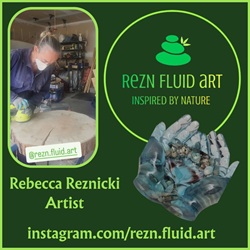The Early Days Had Just Begun!
It was a nightmare! The construction crew and their equipment were all there, ready to tear down the historic structures. The buildings were now old and unused. No one really wanted them. Get rid of them, better to be torn down and replaced with bright new structures. A crowd gathered as the crew started their work. Heritage site was about to disappear! Douglas suddenly woke up, sweat pouring down his face! It was just a nightmare, but one that could become a reality. Douglas was not going to let this happen! His hard work was about to begin! The mills would rise to prominence, just as they had in the early days. Williams Mill
The Acquisition (Williams Mill)
In late 1985, I was driving home from Bolton to Georgetown and took a shortcut through Glen Williams on the back roads. Passing through the old village, I noticed some moving trucks at a cluster of buildings that I’d often admired. They were right in the heart of Glen Williams, a few old, rundown structures that made up the town’s core back then.
One building stood out: a two-and-a-half-story sawmill. It looked like a simple framed building, but it was actually built with heavy timbers, much like a barn. Nearby, there was a large stone building with plywood covering its impressive 8-foot-high windows, and a separate warehouse. The sight of the moving trucks sparked my curiosity.
That evening, I contacted someone who gave me the name of the property owner. When I called them, they explained they’d recently closed up the business and signed the property over to the Industrial Development Bank.
Without hesitation, I went to see the property, made an offer that very night, and, incredibly, the owners accepted it the next morning.
It all happened so quickly. My wife joked that in our 25 years together, she’d never seen me make a decision that fast—and now, after 60 years of marriage, that probably still holds true.
The Prologue
When you visit Glen Williams, a charming spot just inside Halton Hills near Georgetown, you’ll find the Williams Mill Creative Arts Studio. Here, about 30 artists work in a vibrant mix of mediums, including glassblowing, pottery, ceramics, fabric arts, painting (watercolour, acrylic, oil), and jewelry design. Each artist’s studio serves as a mini-gallery, showcasing unique pieces that you can purchase, or simply enjoy. The Mill offers a wonderful variety of art and talent, making it a delightful place to explore and discover beautiful, handcrafted treasures.
The Studios
At Williams Mill, you’ll find a variety of artist studios to explore. In the historic Stone Building, where we are now, six artists work in their unique crafts. Nearby, the Courtyard Studios feature stone sculptures, pottery, and watercolor art, while the Main Street Studio showcases talents across mediums like pottery, sketching, oil painting, and jewelry design.
Just a short stroll across the parking lot is the well-known Blue Building, home to a glass-blowing studio. Here, you can watch glassblowers create beautiful hand-blown glass pieces right before your eyes.
The village of Glen Williams offers even more to enjoy, from having lunch at local cafes to browsing antique shops and collectibles. You can relax in the park, have a picnic by the river, hike scenic trails, or dine at The Glen Tavern, a beloved spot known for its seasonal, contemporary menu, curated wine list, and cozy atmosphere. Open by chance or appointment, The Glen Tavern is a must-visit.
In each studio at Williams Mill, artists are at work, and their creations are available for you to view or purchase. With its inspiring artwork and welcoming spaces, the Williams Mill Creative Arts Studio is the perfect destination for a day of art, exploration, and inspiration.
The Creations
Today, we had the pleasure of watching Darlene Hartung carefully craft beautiful arrangements with fresh dried flowers. In her studio, Barbara McDiarmid captivated us with a demonstration of her intricate birch bark designs. As we moved through the studios, we spent time with ceramic artist Jenanne Longman and soapstone sculptors Mary Ellen Farrow and Graham Bowden, each sharing their unique artistry.
We then enjoyed seeing the works of Stephanie Schirm, a talented mixed media artist, illustrator, textile artist, and instructor, hand-paint original works with impressive skill. Just around the corner, glass artist Berna Kilic treated us to a bead-making demonstration, skillfully crafting a glass heart right before our eyes.
Although we couldn’t meet every artist and artisan this time, we invite you to visit the Williams Mill Creative Arts Studio website to discover more about the resident creatives. Drop by often, you never know what inspiring creations you’ll see next!
Website: williamsmill.com
Meet the artists/artisans at williamsmill.com/artists
The Glass Blower
Tara Marsh, a professional glass artist with 23 years of experience, honed her craft at Sheridan College in Oakville. Glen Williams is home to her glass-blowing studio, where she and a group of talented artists create in a setting that’s rare to find. The eight artists in this co-op studio share expenses, duties, and daily responsibilities, as well as the costs of maintaining the gallery.
In Tara’s words: “The creative process in my art pieces begins with brainstorming, drawing inspiration from the textures, colors, and forms of nature, as well as studying artwork from both the past and present.” She reflects on a quote by John Opie: “Art is more godlike than science. Science discovers; art creates.” For Tara, glasswork is both a science and an art, constantly revealing new, intricate qualities. Despite gaining control over the medium, each piece remains beautifully unique and often unpredictable. Her deep love for glass drives her to continually refine her craft and expand her skills.
The Beginning
“From Sawmill to Grist Mill”
Baja Williams arrived in the area in 1825, having been born around 1775. By then, he was on his third wife, had eight or nine children, and even had a few more after settling here, despite being over 60.
In 1860, the original sawmill was rebuilt into what we now know as the Yellow Mill. The sawmill was the first structure needed in any wilderness community, as it provided the essential lumber to build homes and other buildings. Later, a grist mill was built next to it, a frame building on a stone foundation, illustrated in the 1878 atlas.
Baja Williams, one of Glen Williams’ first settlers, initially built the sawmill in 1860 after purchasing a 200-acre plot in 1824–25 from John Butler Muirhead, the original grantee who held the land only briefly after the War of 1812. This sawmill and grist mill supported the family’s prosperity throughout the 1800s.
“Good Rapids” and “New Sawmill”
Williams chose this location because of the strong rapids, providing reliable water power from the river’s natural fall. The original sawmill, likely a simple shed, was built to cut lumber, marking the start of a community that would thrive on the mill’s foundational industry.
“From Grist Mill to Electric Power Plant”
Around 1880, the original Grist Mill burned down. In the 1890s, though the exact year is uncertain, a stone electric power plant was built on the Grist Mill’s foundation. This plant was constructed to generate electricity well before Ontario Hydro brought power to the area in 1912.
The electric plant operated from approximately 1894 until 1912, at which point the power business was sold to Ontario Hydro. However, the original owner continued generating electricity for his own plant rather than purchasing it from Hydro. This marked the beginning of the second building on this historic foundation.
And the third building on the Williams Mill site is the Glen Williams glass blowing building.
The Find
I felt drawn to the challenge because of my love for historic buildings, a passion I inherited from my mother, who always dreamed of buying and renovating a stone house, though she never did. Growing up near Ottawa, we would often drive through the countryside, admiring places like the Tyrone Mill.
What intrigued me was that, while the buildings were in rough shape, one of them could quickly be restored enough to rent out and generate revenue. This income would help cover the loan and fund repairs for the other buildings.
Doug’s philosophy was simple: take this crumbling old stone building, restore it, and transform it into a beautiful space where artists could create, showcase, and sell their work.
The End?
The yellow sawmill was originally powered by water, and if you visit the basement, now home to The Glen Tavern fine dining restaurant, you can still see the large beams that support the ceiling of the first floor. These beams have visible cutouts where wheels once turned, allowing water to flow directly through the building, entering at one end and exiting at the other.
























